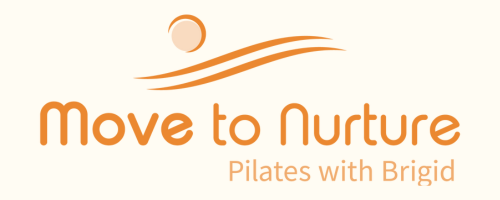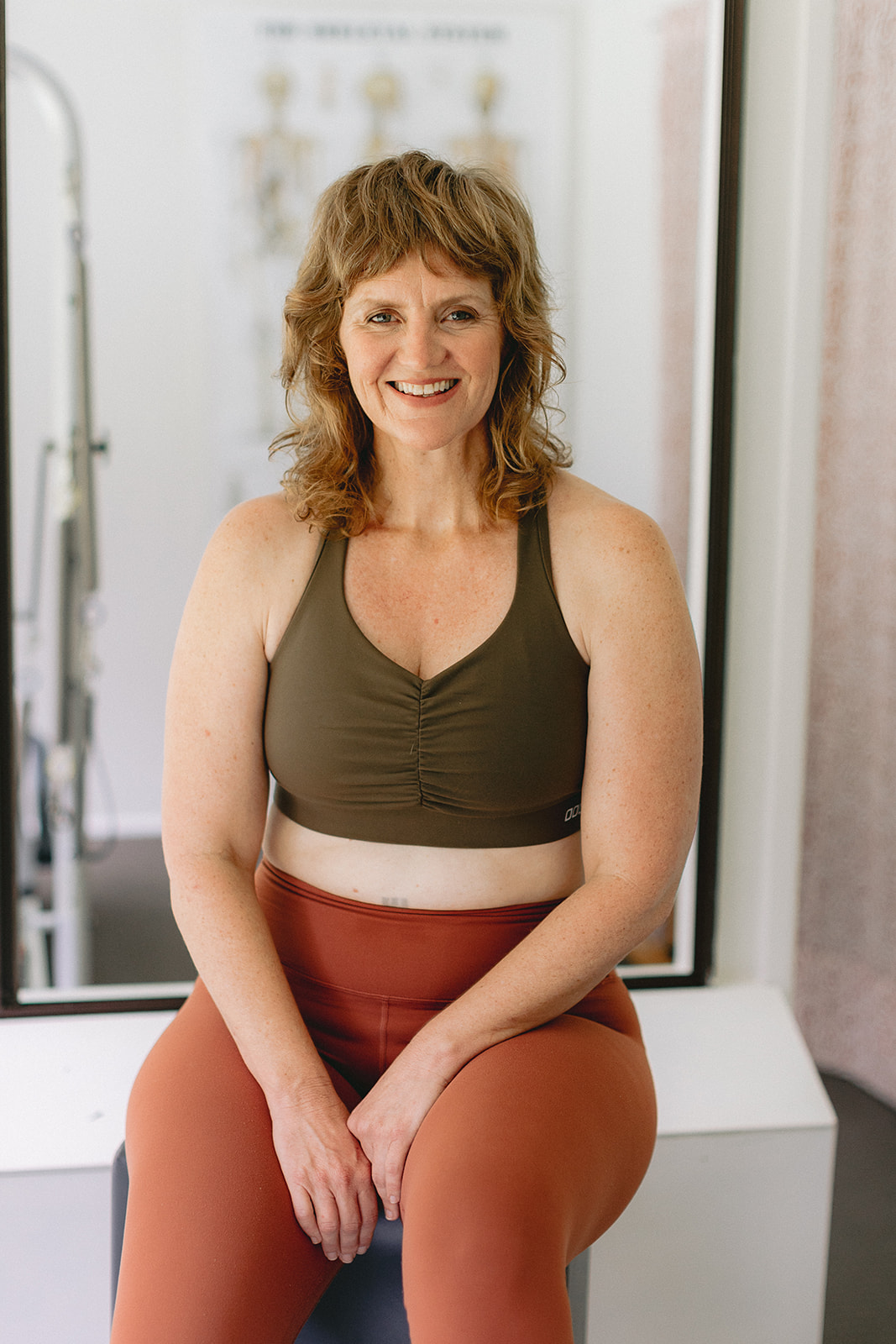If you are wondering what happened to your pelvic floor strength and if your pelvic floor will ever recover, this blog is for you. You may feel pressure down whenever you use your abs, you may leak when you sneeze, jump or cough. You may just have no idea whether your pelvic floor is working at all but your lower back gets sore a lot.
These are common symptoms of pelvic floor dysfunction (including pelvic floor weakness). Unfortunately if the symptoms have been around for more than 6 weeks it is unlikely they will resolve on their own.
The good new is that it is likely your pelvic floor will recover by working on your alignment, breathing and the coordination of your muscles. This is non-invasive treatment that you can do with the guidance of a Pelvic Corrective Exercise Specialist and potentially a Pelvic Floor Physiotherapist. This is the path to getting your confidence and your life back!
How do I know if I have pelvic floor issues?
Some signs you have lost pelvic floor functions are:
- Leaking under pressure
- Pressure down into your vagina
- Pelvic pain, hip pain or lower back pain
- Painful sex
Whilst these symptoms are common, they are not normal. Not due to age or having babies. These are signs that your pelvic floor is not functioning well.
How did this happen?
Factors that contribute to decreased Pelvic Floor function are:
- Pregnancy
Carrying and growing a baby in your abdomen places extra pressure on your pelvic floor. Hips spread to make room for baby ‘flattening’ pelvic floor muscles making them less responsive.
- Hormonal changes
Hormones can influence the quality of soft tissue (muscles) in your body. During pregnancy and postpartum, hormones makes ligaments and muscles for ‘stretchy’ to allow for birth. During menopause hormonal fluctuations can change muscle mass and hydration.
- Pelvic floor trauma or injury
Tearing, bruising and scar tissue from any incident but most commonly childbirth (vaginal and cesarean) can cause damage to pelvic floor muscles and interrupt function.
- Faulty pressure management (alignment and breathing)
As part of the ‘core muscles’, pelvic floor muscles help to manage pressure in the body and keep the spine safe. Prolonged issues with alignment can affect the function of both the diaphragm and the pelvic floor muscle group, resulting in poor pressure management.
What’s actually going on?
A common pattern for women (but won’t be correct for everyone) is that they may notice decreased Pelvic Floor tone. They start to hold their pelvic floor tight in order to strengthen it more.
Instead what happens is the pelvic floor muscles become tighter and less responsive. This makes the symptoms worse.
TRY THIS: Can you relax your pelvic floor? Can you feel the muscles drop down? I find it easier to find this at first on the INHALE. As you breathe in relax your pelvic floor and feel it descend. I have heard this described as a sensation of the pelvic floor muscles ‘blooming open’. Can you feel your pelvic floor muscles let go? If not you may have pelvic floor tightness.
Pelvic floor tightness goes hand in hand with pelvic floor weakness. Imagine if you held your arm up in front of your body to get it stronger. You hold it up all day. The muscles fatigue and become shorter and tighter. If you did this for days you would not get a strong arm but a weak, tight arm and a sore neck!
Your pelvic floor is no different. The muscles need to be able to relax and lengthen before they are ready for strength building.
If you think you may have pelvic floor tightness, get assessed by a pelvic floor physiotherapist. This will take the guess work out of your recovery and they will help you understand what is going on in your body.
What helps your pelvic floor recover?
Here are x great things you can do help your pelvic floor recovery:
- Relax your pelvic floor muscles on your inhale, focus on letting them go and letting them descend on your in breath.
Doing this many times through the day will help with lengthening your pelvic floor muscles. Remember if your muscles can lengthen and relax then they can lift. A tight pelvic floor means a weak pelvic floor not a strong pelvic floor.
- Spend time in positions where you can spread your sits bones
Childs pose and happy baby pose are great positions to support natural pelvic floor function. Use these positions to practice relaxing your pelvic floor on your inhale.
- Gentle, regular walking is good for natural pelvic floor function and strengthening
Ten to fifteen minutes of brisk walking 4-5 times a week is great for your pelvic floor. Remember not to be holding tight, allow your breath to descend into your pelvic floor muscles as you move around
- Get assessed by a Pelvic Floor Physiotherapist and find out what is going on for you
Everybody is different and if your symptoms are impacting on your life to the point where you feel less confident, you are in discomfort and pain everyday, your relationships are suffering, it’s worth taking action because you don’t have to live like this!
What doesn’t help your pelvic floor recover?
- Doing kegels everyday even if you are not feeling any improvement
Kegels will not work for everybody. If they are not working for you go to the list above and start working through it.
- Become aware of whether you are holding your pelvic floor up during the day
It can become an unconscious thing where we hold tightness in our pelvic floor to ‘keep it strong’ or to ‘stop it from dropping’. This will make it difficult for your pelvic floor to function and get stronger – see the analogy of the arm above. Start with awareness and then you can start practice relaxing.
- Strong core work outs
It’s common especially for post-natal women to feel like they have to get back into intense abdominal / core workouts to strengthen their pelvic floor muscles. Unfortunately if you have issues with pelvic floor function this will only make things worse. Beginning with restoring function and learning good pressure management is the best approach for long term pelvic floor strength.
- Pancake bum or tight, weak glutes
If you are wondering where your butt muscles went, this will not be helping your pelvic floor. We need good strong glute muscles to support our pelvic position, without this our pelvic floor takes up the work of other muscles by gripping tight. Then everything gets weak and tight together. Release, lengthen and strengthen your glutes to support your pelvic floor function.
Why haven’t I heard about this from my doctor?
Women’s health is definitely playing ‘catch up’ when it comes to supporting women to enjoy healthy pelvic floor function. The primary focus for our health system is reducing maternal morbidity, keeping mums and babies alive. And rightly so! The focus is not on helping women maintain a healthy pelvic floor throughout their lives, even though the impact of pelvic floor issues can be debilitating.
I think the lack of focus on this area of women’s health is also related to the invisibility of mothering and menopause in our society and a belief that women just have to put up with pelvic floor issues as they have children and age. But the truth is women without children and men also experience pelvic floor issues.
Pelvic floor issues can affect your confidence (incontinence and pressure down), give you pain and discomfort everyday (constipation, low back pain, hip pain, pelvic pain) and put strain on your relationship (painful sex). Pelvic floor issues are preventable through good assessment and targeted release and training. Imagine your life without these issues, it’s possible to get there!
For regular movement and mindset tips for pelvic floor recovery sign up to my (mostly) weekly email newsletter.

I am Brigid Pearse a certified Pilates instructor, Pregnancy and Post-natal Exercise Specialist, an ex-dancer and a mum. I run a fully equipped Pilates studio from my home in Lennox Head and I run community Pilates mat classes in Byron Bay, Ballina and online.






0 Comments